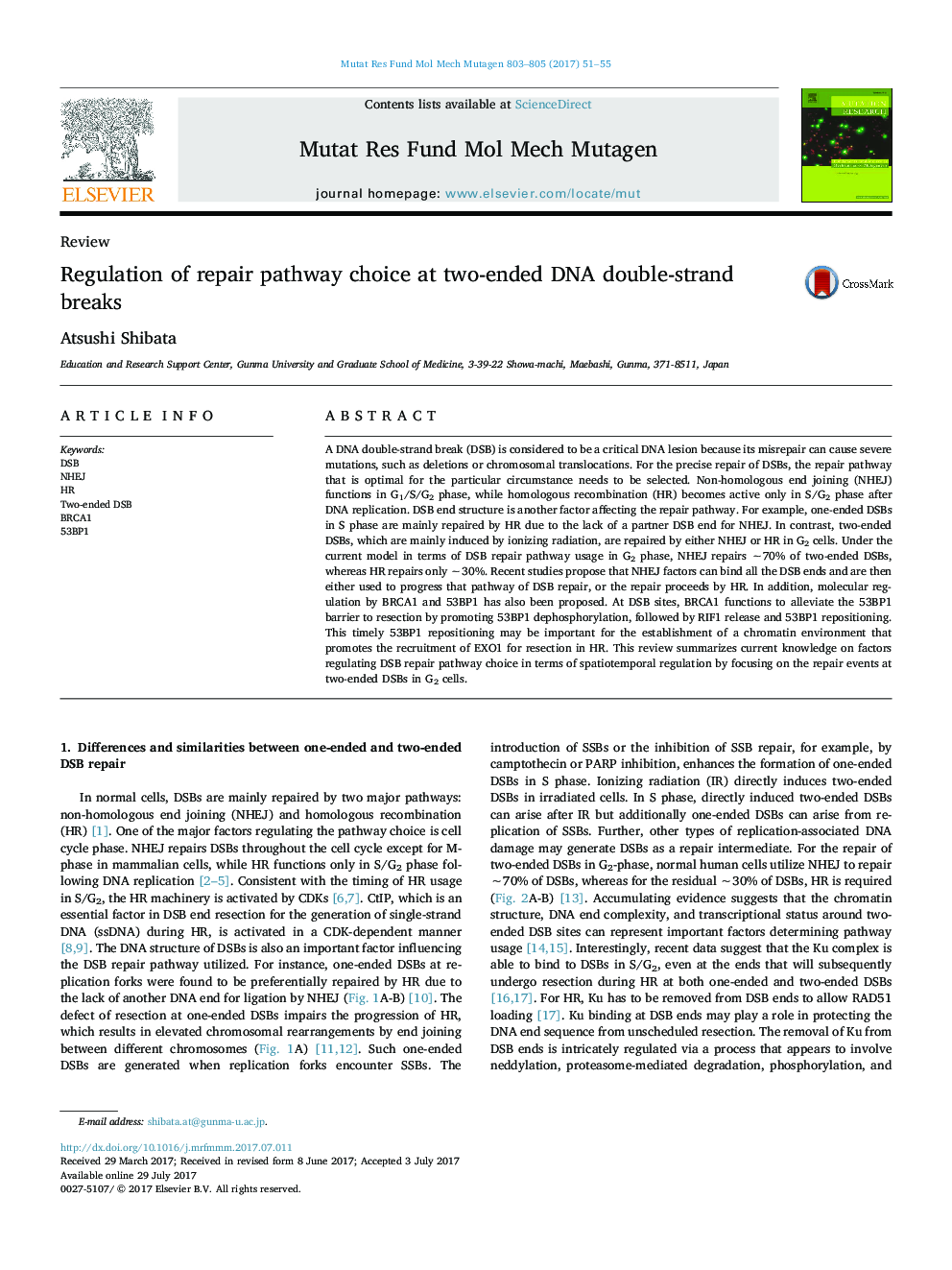| Article ID | Journal | Published Year | Pages | File Type |
|---|---|---|---|---|
| 5528663 | Mutation Research/Fundamental and Molecular Mechanisms of Mutagenesis | 2017 | 5 Pages |
A DNA double-strand break (DSB) is considered to be a critical DNA lesion because its misrepair can cause severe mutations, such as deletions or chromosomal translocations. For the precise repair of DSBs, the repair pathway that is optimal for the particular circumstance needs to be selected. Non-homologous end joining (NHEJ) functions in G1/S/G2 phase, while homologous recombination (HR) becomes active only in S/G2 phase after DNA replication. DSB end structure is another factor affecting the repair pathway. For example, one-ended DSBs in S phase are mainly repaired by HR due to the lack of a partner DSB end for NHEJ. In contrast, two-ended DSBs, which are mainly induced by ionizing radiation, are repaired by either NHEJ or HR in G2 cells. Under the current model in terms of DSB repair pathway usage in G2 phase, NHEJ repairs â¼70% of two-ended DSBs, whereas HR repairs only â¼30%. Recent studies propose that NHEJ factors can bind all the DSB ends and are then either used to progress that pathway of DSB repair, or the repair proceeds by HR. In addition, molecular regulation by BRCA1 and 53BP1 has also been proposed. At DSB sites, BRCA1 functions to alleviate the 53BP1 barrier to resection by promoting 53BP1 dephosphorylation, followed by RIF1 release and 53BP1 repositioning. This timely 53BP1 repositioning may be important for the establishment of a chromatin environment that promotes the recruitment of EXO1 for resection in HR. This review summarizes current knowledge on factors regulating DSB repair pathway choice in terms of spatiotemporal regulation by focusing on the repair events at two-ended DSBs in G2 cells.
